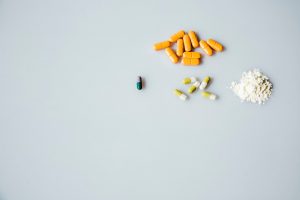How Long Does It Take For Antibiotics To Work?
CDC data reporting shows that US Doctors write out approximately 260 million new antibiotic prescriptions yearly. This means that roughly 793 of every 1000 individuals residing in the US will have an illness or infection requiring a course of prescription antibiotics within a given year. So you would be correct if you guessed that this makes antibiotics one of the most prescribed classes of prescription drugs.
There are several solid reasons to explain the prevalence of antibiotic use. Antibiotics are prescribed to treat everything from an ear infection to bacterial rhinosinusitis or a urinary tract infection (UTI). In addition to these common ailments, medical professionals rely on antibiotics to treat more complex conditions in dental, surgical, and hospital settings.
How Long Does It Take For Antibiotics To Work?
Antibiotics go to work attacking the bacterial cells in your body as soon as they are administered. This means that as soon as the antibiotic comes into contact with the bacterial cells, it will begin to destroy or interfere with the cell’s function immediately.
However, depending on the type and severity of the infection, it may take some time before antibiotics affect the symptoms. As a general rule of thumb, when antibiotics are used to treat common infections such as ear infections, urinary tract infections, and bacterial rhinosinusitis, most people will notice a reduction in the severity of their symptoms within the first few days of starting a course of antibiotics.
However, it is essential to remember that the reduction of symptoms should not be taken as an indication that the infection is gone. Always complete the course of antibiotics as prescribed to ensure that all bacteria are destroyed, or the infection may return.
How Are Antibiotics Effective?
The most common antibiotic, antibacterial antibiotics, may use several mechanisms to attack bacterial cells to stop the spread of infection in the body. Bacterial cells generally feature robust walls designed to stand up to the body’s natural immune system to allow the bacteria to thrive inside its human host.
Bacteriostatic Antibiotics work by either breaking down the protective wall of the bacteria so that the body’s immune system can destroy the cell or by either interfering with the bacterial cell’s ability to replicate or interfering with the cell’s metabolism. Both processes degrade or eliminate the bacterial cell’s ability to reproduce and spread infection throughout the human body.
Best & Safest Antibiotics
Antibiotics are a broad class of drugs, and different antibiotics attack different types of bacteria. This means that the “best” antibiotics to use are the antibiotics that are specifically tailored to treat the same bacteria that is causing the infection.
Some antibiotics, called broad-spectrum antibiotics, can treat a wide variety of bacterial infections, while other antibiotics are only effective against a specific type of bacteria. A medical professional will determine the best antibiotic to treat a particular condition or other ailments.
The safety of various antibiotics depends on several factors, and the “safest” antibiotics for an individual to use will largely be determined by the individual’s unique medical history.
For example, suppose an individual has had an allergic reaction to Penicillin. In that case, the medical professional may determine that it not be advisable to use any of the antibiotics in the Penicillin family. However, most patients would tolerate this particular family of antibiotics well.
When Antibiotics Are Needed
Antibiotics are used to treat bacterial infections. It is essential to remember that antibiotics are not the same as antiviral drugs and should not be used to treat viral infections like the common cold, influenza, or the COVID virus.
A medical professional can determine if an ailment or disease warrants antibiotic treatment and which antibiotics will be the most effective.
When To Stop Taking Antibiotics
A physician or medical professional will generally prescribe a 7 – 14 day antibiotic treatment, though longer treatment times may be required for severe or chronic infections. Though most patients begin noticing a significant reduction in symptoms after 2 to 3 days of antibiotic use, it is essential to continue taking all antibiotics for the time prescribed by the medical professional. Do not stop taking antibiotics prematurely unless expressly advised to do so by a qualified professional.
Antibiotic Resistance
Due to the increased prevalence of antibiotic resistance, there has been a concerted effort to reduce the reliance on antibiotics to treat minor infections.
However, bacteria are living organisms with the ability to evolve. As bacteria encounter antibiotics repeatedly, they eventually develop a defense mechanism that allows them to evade the effects of the antibiotic.
When bacteria can withstand the assault of an antibiotic, those bacteria are said to have become antibiotic resistant. As more and more bacteria begin to develop resistance to antibiotics, it becomes more difficult for antibiotics to do the work of treating severe infections.
Common Side Effects Of Antibiotics
Most individuals will tolerate the majority of antibiotics. The most common side effects experienced from antibiotic use stem from the fact that antibiotics may target and destroy the beneficial bacteria that naturally exist inside the body alongside the harmful bacteria.
Some individuals may experience nausea, diarrhea, skin rashes, or yeast infections during or immediately following a course of antibiotics. Probiotics and the antibiotics prescribed can replace the beneficial bacteria in your system to help prevent, reduce, or eliminate these side effects.
In rare instances, allergic breakouts can occur. In these instances, side effects can be severe and require medical attention.
When To See A Doctor
The clinical pharmacology of antibiotics is complex, with many factors determining the potential benefits and adverse effects that antibiotic use may have on the individual.
For this reason, antibiotics should only be taken when prescribed by a licensed medical professional. A healthcare provider will prescribe the appropriate antibiotic for your specific infection and monitor the outcome of the antibiotic treatment.
If your symptoms have not resolved, worsened, or developed new symptoms after completing your course of antibiotics, it is time to contact a healthcare professional.
Be aware that some individuals may experience an allergic reaction to a particular antibiotic, as with any drug. Severe allergic reactions can be life-threatening. If you believe you may be having an allergic reaction to antibiotics, or other medications, seek medical assistance immediately.

Frequently Asked Questions
Antibiotics begin attacking the bacterial cells immediately. However, depending on the seriousness of the infection and the specific type of bacteria, it may take several days to notice an improvement in your symptoms.
The time it takes for antibiotics to get to the target cells will differ depending on the type of antibiotic and the route of administration. Some antibiotics are administered intravenously and enter the bloodstream immediately. Oral antibiotics must be allowed to work through at least some portion of the digestive system before they begin to build up in the body. Oral antibiotics may take several hours to a day or more to reach peak concentration and begin to combat the infection.
While many infected cysts may resolve without antibiotic treatment, if an infected cyst becomes significantly inflamed, a healthcare professional may prescribe a course of antibiotics to help cure the infection. In this case, most people will notice a reduced inflammation of the infected cyst within a few days of beginning treatment. However, the antibiotics may take a week or two to resolve the infection entirely.
The penicillin family of antibiotics is most commonly used to treat tonsillitis, strep throat, and other throat infections.
Penicillins can take some time to build up to peak concentration in the system. For this reason, it can take many days for this antibiotic to resolve the symptoms of tonsillitis.
While a UTI may resolve naturally, without antibiotics, antibiotics can help reduce the duration of the condition and the severity of the symptoms. In addition, it can help prevent serious complications that can occur if a UTI is allowed to go unresolved for an extended period. For most individuals, antibiotics will reduce or eliminate the symptoms of a UTI within a few days of beginning treatment.
The length of time that an antibiotic remains active within the body and continues to provide a therapeutic effect varies depending on the type of antibiotic administered. While most commonly prescribed antibiotics are short-acting and cease to be active in the systems within a few hours of the final dose. Other antibiotics remain in the system for up to several weeks following treatment. Remember, while an antibiotic may remain present in the system, its beneficial action may be significantly reduced or eliminated over time.
The length of time antibiotics remain in the system depends mainly on the specific type of antibiotic. Some antibiotics are flushed out of the system within hours of the final dose. In contrast, others may remain in the system for several weeks after treatment.
Antibiotics begin to break down the bacteria cells or disrupt cellular activity when the antibiotic agent contacts the bacteria. Once a significant number of bacteria have been destroyed, the patient will begin to notice a reduction or elimination of the symptoms associated with the infection. Mild to moderate infections will generally show improvement within 2 to 3 days of starting antibiotic treatment, while more severe or resistant infections may take several days to show improvement.
Most antibiotics begin to break down and eliminate bacteria from the body as soon as the antibiotic enters the bloodstream and makes contact with the bacteria. Most patients with mild to moderate infections will feel markedly better within 2 to 3 days of antibiotic treatment. More severe infections or resistant bacteria may require a longer course of antibiotic therapy to reduce symptoms significantly.
The speed with which an antibiotic begins to attack the bacterial cells depends mainly on the antibiotic used and the route of administration. Antibiotics administered intravenously enter the bloodstream and start working immediately following contact with the bacterial cells. Oral and topical antibiotics may take a few hours to a few days to reach peak concentration in the body and begin working to break down the bacterial cells.





